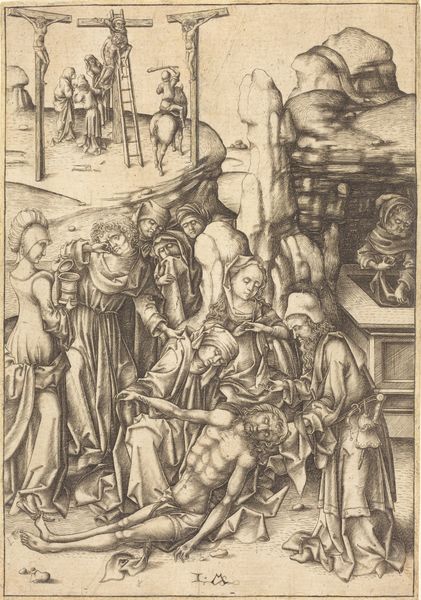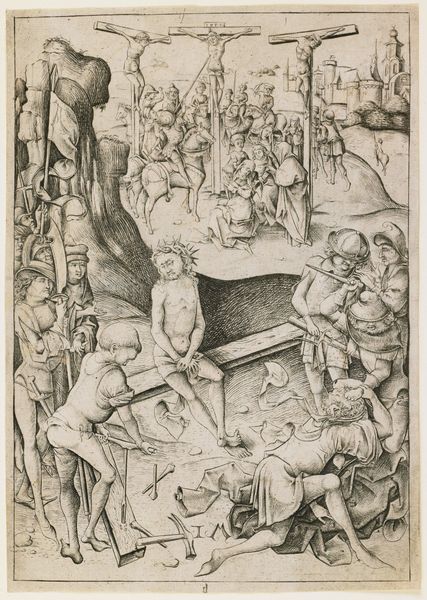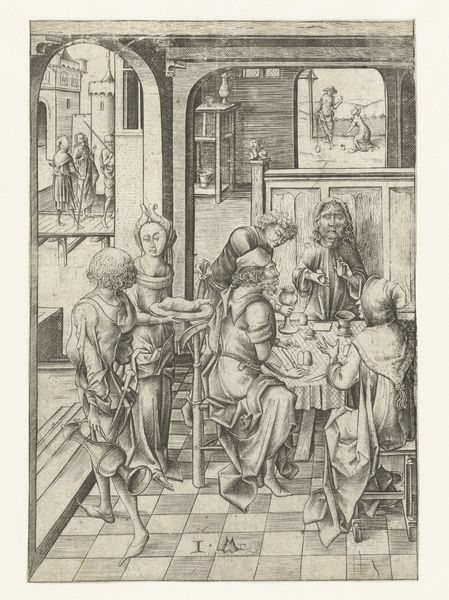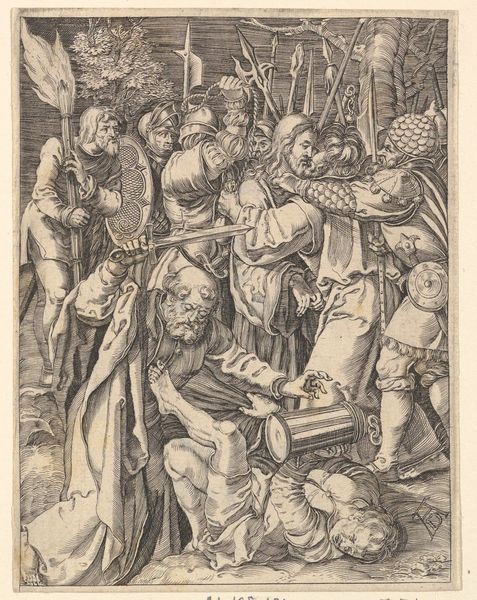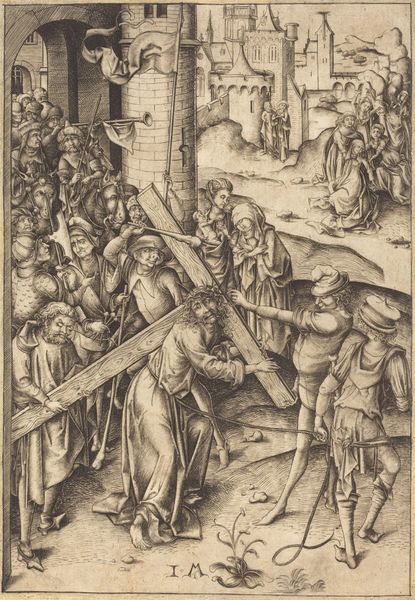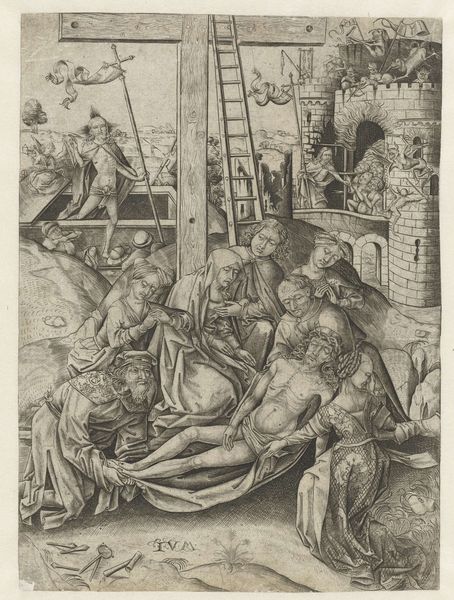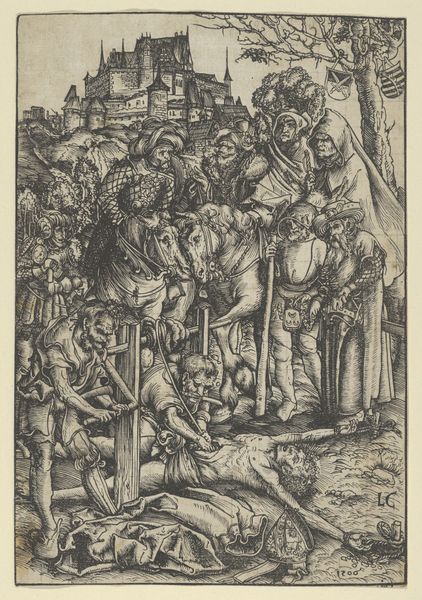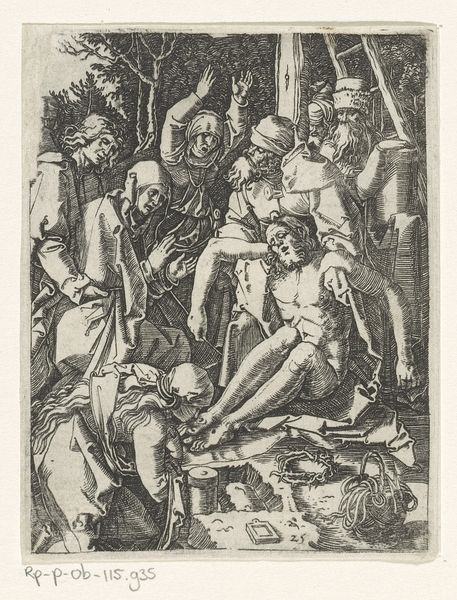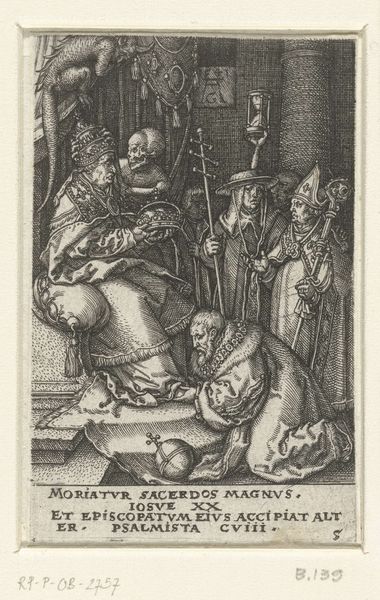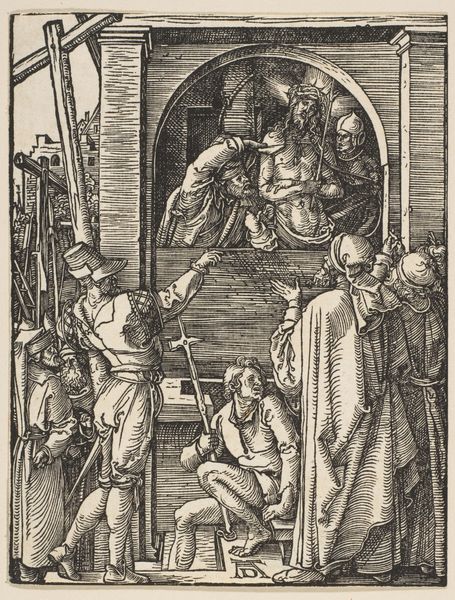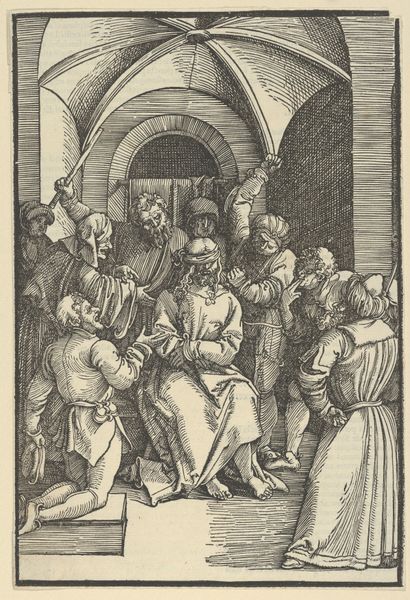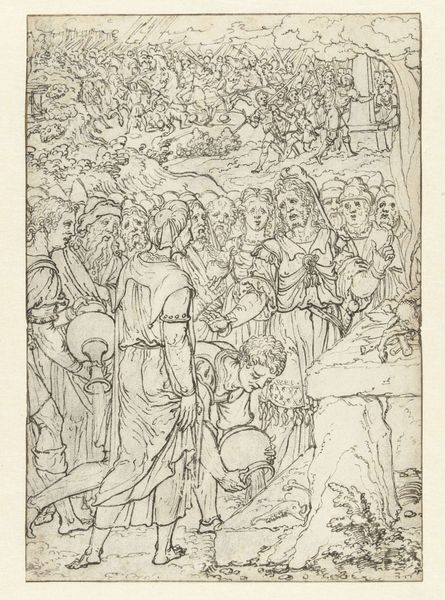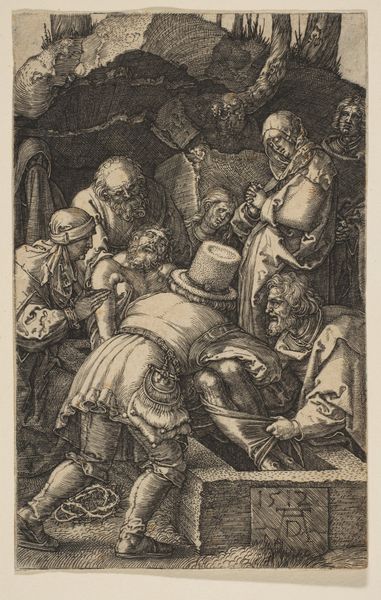
print, engraving
#
medieval
# print
#
landscape
#
figuration
#
line
#
history-painting
#
northern-renaissance
#
engraving
Dimensions: height 208 mm, width 145 mm
Copyright: Rijks Museum: Open Domain
Curator: What strikes me immediately about this engraving is the raw emotion; the palpable grief is radiating from the figures clustered around the body. Editor: Indeed. This is "The Lamentation" by Israhel van Meckenem, created sometime between 1455 and 1503. You can see it here at the Rijksmuseum. The piece, rendered in striking detail for an engraving, powerfully demonstrates Meckenem's skill as a printmaker and the expanding market for such devotional images. Curator: Absolutely, I agree about his mastery of engraving. Note the incredible precision of the lines. They give depth and texture, especially to the fabrics and faces. Also the lines in the landscapes, suggesting a clear division between our emotional reaction to the main subject and the emotional landscape that surrounds that scene. Editor: Consider the broader context too. This piece was made during a period of increased urbanization and literacy. Printmaking allowed for mass production of images, making art more accessible. "The Lamentation" wasn't just an aesthetic object but an item for personal devotion, brought into homes, shaping beliefs, reinforcing socio-political norms, and spreading ideology through art. Curator: A lot can be said regarding that, in the way the artist manages the depiction of suffering and death with market consumption; It shows a burgeoning capitalist society finding its feet with novel forms of devotion through easily replicable formats like the engraving. But do you not find something quite cold about its execution? As if this proliferation cheapens, on some level, the very thing it is supposedly celebrating? Editor: That's a compelling, if critical, reading! Perhaps that coldness speaks to a wider detachment within society at the time, or it's the inevitable consequence of mass production of grief, that enters in tension with religious dogma. It seems difficult to discern such personal intention. Curator: Well, regardless of Meckenem’s personal beliefs, one can definitely grasp the societal anxieties within those precisely rendered lines. Editor: A chilling reflection indeed and an art market ready for explosive growth in the early modern era.
Comments
No comments
Be the first to comment and join the conversation on the ultimate creative platform.
